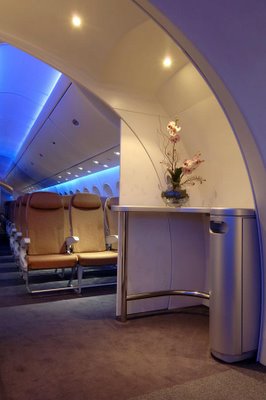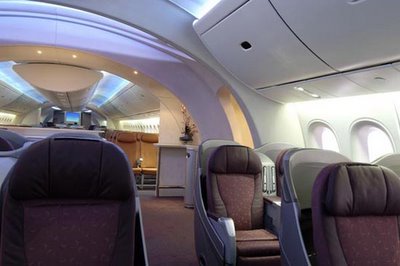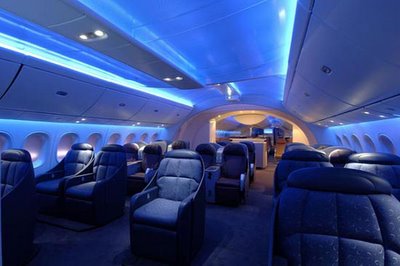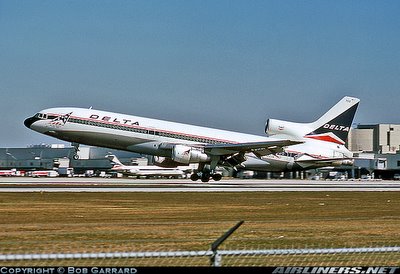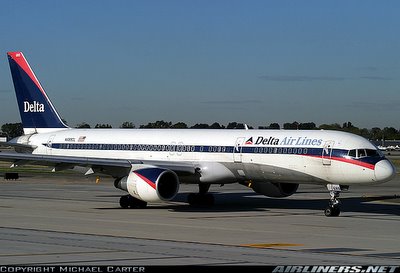As a quick diversion from our usual talk concerning the ins and outs of airplane travel, I thought I'd give a few tips that I learned about riding urban taxis. Most of this information comes from experiences in Boston, but hopefully it is applicable elsewhere.
1) To hail a taxi in a busy area of town (where there are plenty of taxis driving in either direction), give some thought as to where you are going, and hail a cab on the side of the road that will more directly take you to your destination. Otherwise, the cabbie may feign avoiding illegal turns and take you on a roundabout tour of the city to reverse the direction from that which the traffic was moving on the side of the road where you were picked up.
2) To hail a cab, do not pay attention to the light on top of the car. Although a darkened light is supposed to signal "hired" and a lighted cab is supposed to alert "available for hire", it doesn't work that way. Whenever you see a cab approaching, step out into the street and hold up your arm until they either signal that they are stopping for you, or they pass you.
3) NEVER, EVER step into an empty cab that is directly behind a stopped, empty cab. That unhired driver will get pissed, try to block your chosen, hired cab, and likely chase you down the road until your cabbie makes some aggressive maneuvers to lose the mad-angry cabbie. This applies at any gas station where more than one cab is gassing up, and also at the airport.
4) On that note, use a taxi stand correctly. Go to the first available cab in the line. Let the driver help you place your bag into the trunk, and tell him/her outside where you are going, and repeat that once you are inside the car.
5) If you are being dropped off at your destination and have items in the trunk, the cabbie will most likely step out of the car and remove the items from the trunk before accepting money. If he does not, open your back door WIDE OPEN, ask to pop the trunk, hand him/her the money (or else he will get pissed), remove your items from the trunk (after asking him to pop the trunk, if needed...and don't
EVER leave the car unless the trunk is popped), THEN close the rear door. Otherwise, you may no longer have your items.
6) If you drop your cell phone in the cab, and realize that you did so after letting the cab go along its way, call your cell phone immediately. Ben has experience with this...he got his phone back on New Years Day 2005 in this very manner. Hand the cabbie an extra 20% tip for taking the time to drive back and, especially, for answering the phone in the first place.
7)
NEVER, EVER let any of your personal belongings, except your feet, touch the floor of a cab. Remember, cabs are most useful when drunk out of your mind at night. Many people use them for that reason, and don't know how to signal when to take a "pit stop" to empty their stomach. That's why cabs smell like car freshners...to rid the air of vomit.
8) If the cabbie needs to stop to fill up, make sure he or she stops the clock for the duration of the fill-up. Otherwise, you'll be forced to argue your way out of an expensive fare, on top of being asphyxiated by the smell of fresh gasoline inside the car, as cabbies invariably fill up with the car engine still running, against safety regulations.
9) Talk to your cabbie, or at least try to do so. This will make the experience more fun, and they are generally pretty agreeable because they want a good tip. In many cases, I have found that a personal connection with the cabbie (even by simply asking him or her where they have been that night, or if it's busy) so that they are less likely to cheat you. Act alert, on that note. This is especially the case in Boston. Ask them where they are from (usually Haiti or Cuba...in Boston, at least). Discuss politics with them. Have them agree with you that anal sex between two men should be perfectly legal...as well as gay marriage. If they know how to do business, they will usually agree, and provide some interesting stories about their personal experiences, in some cases.
10) If you are drunk, need to get home, and are not sure how much money you have in your wallet (this has happened to me a few times), pull out your wallet upon entering the car, and after letting them know your destination, tell them you only have
x amount of dollars. They will take the quickest route and give you a break if you are upfront with them. Whatever you do, do
not wait until you arrive at your destination to try to shortchange them. If that happens, and the cabbie seems pissed, ask to drive you to the nearest ATM, hand them the money, and then walk your own ass from the ATM to your destination.
Happy cabbing, everyone!





